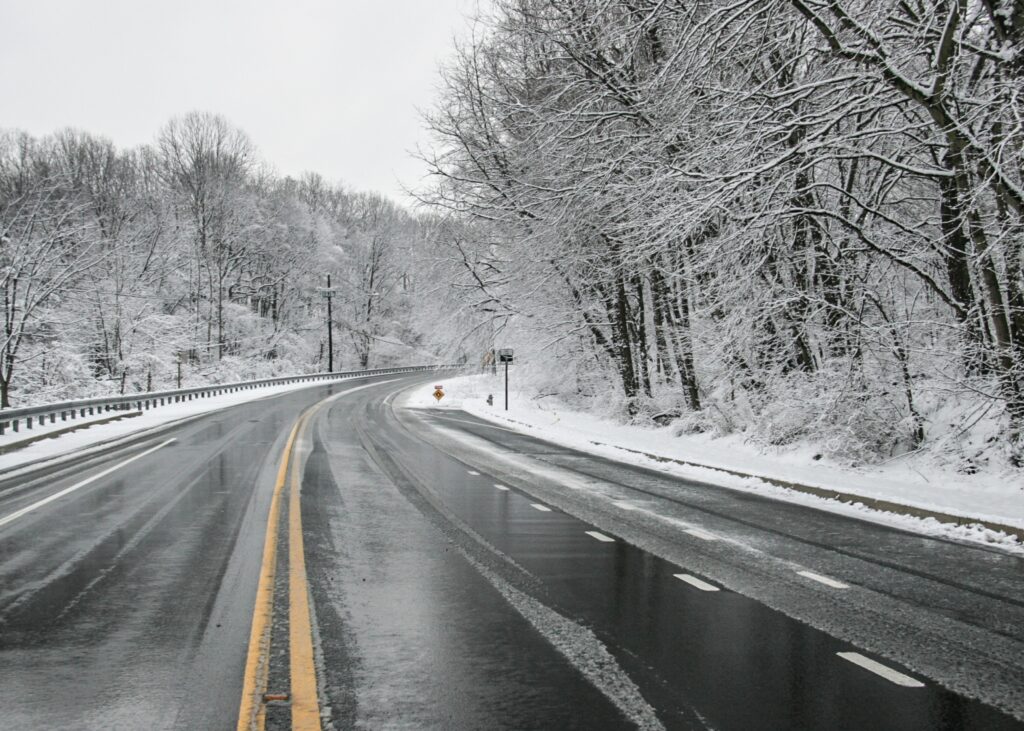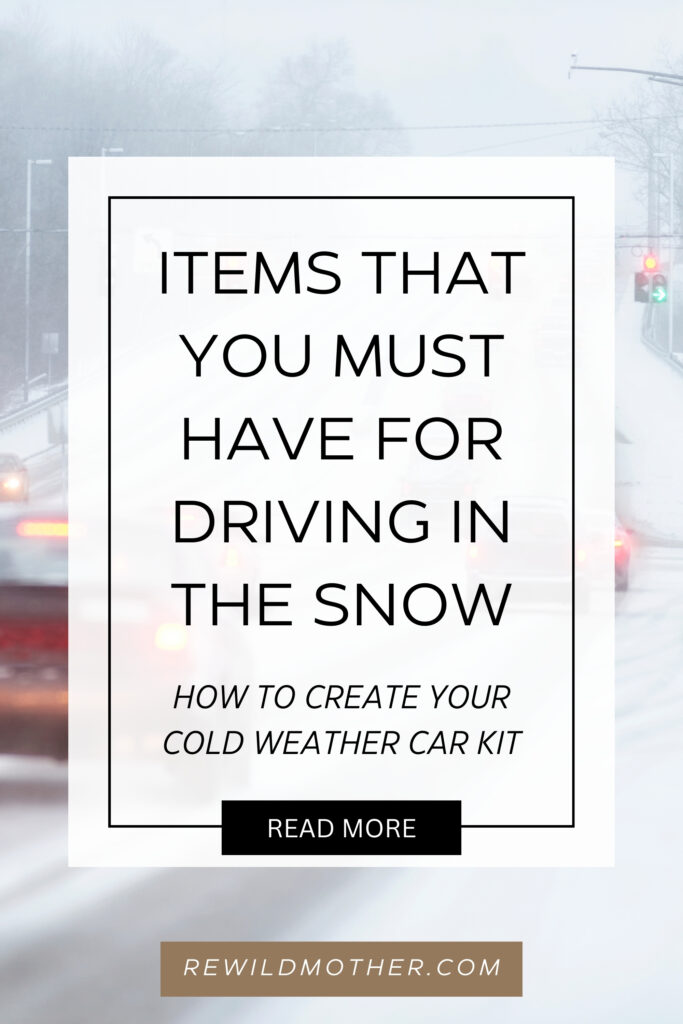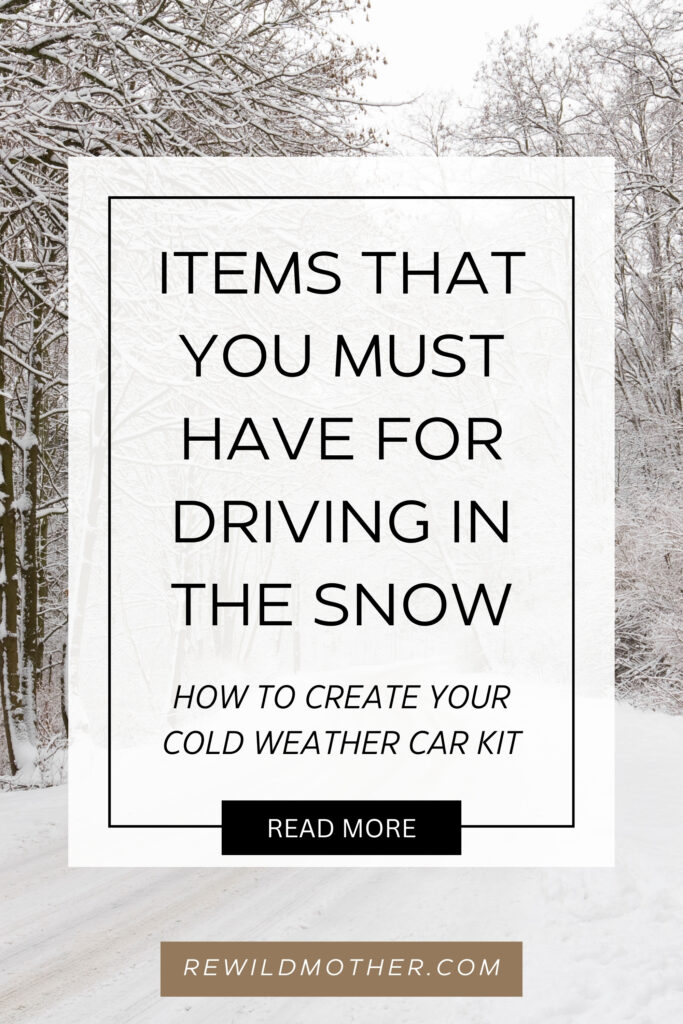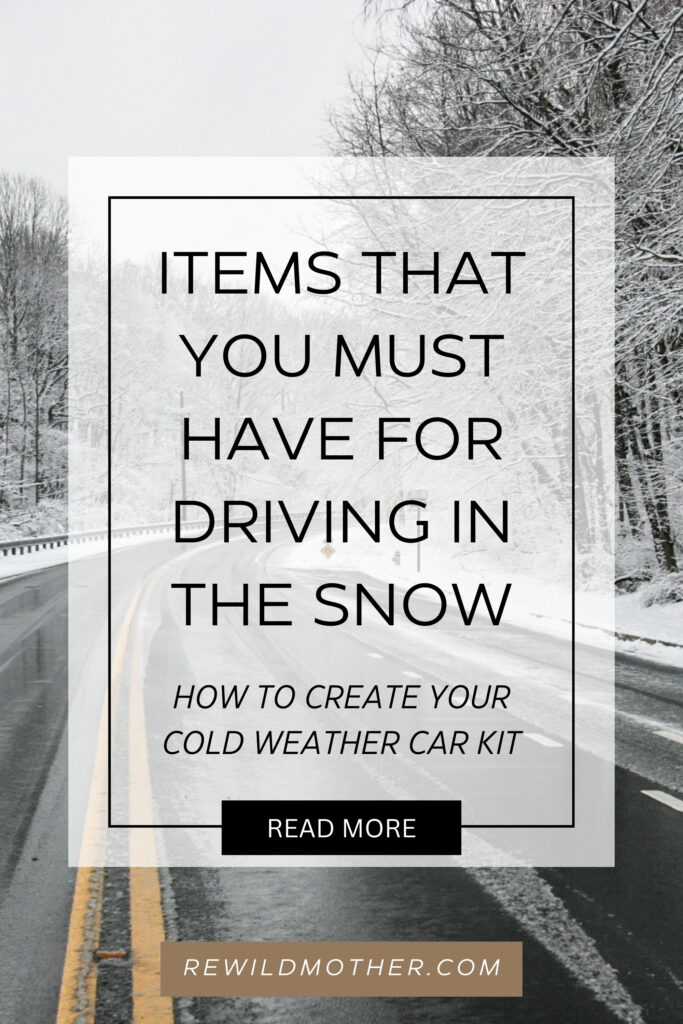
Make sure you are prepared this winter with a Cold Weather Car Kit! Especially if you are driving in an area that experiences extremely cold temperatures, snow, ice, and frequent storms, you need to be prepared to navigate any weather conditions that you encounter on the road.
The good news is that putting together a vehicle cold weather kit is rather easy and you probably already have a bunch of these items around your home.
Note: this kit is not just for the winter months and isn’t only for super snowy places. Cold weather storms (like the Polar Vortex that we just experienced in 90% of the US) can happen nearly anywhere. It’s usually the places that don’t typically experience extreme weather that get hit the hardest by unusual weather (like when Texas froze and homes were without water for weeks!)

Here are items to collect for your Cold Weather Car Kit:
Clothing:
- Gloves for each family member
- Insulated, waterproof jackets
- Emergency bivvy (enough for everyone in the vehicle). In my opinion, this is the most underrated piece of survival gear. If you are caught in a situation where you are rapidly losing heat or you have become wet in the cold, it is imperative for survival that you insulate body heat immediately. An emergency bivvy is a very small and light item that can be an emergency shelter or can even save your life in emergency situations. Additionally, if you know you’ll be traveling in extreme conditions, I’d suggest packing sleeping bags for better comfort and warmth.
- Make sure to have warm moisture wicking clothing layers, a waterproof jacket, and snow boots/waterproof footwear, and a warm hat. Note: if you routinely drive to work or another location (that experiences cold weather, ice and snow) where you are wearing fancier clothing, definitely have a change of clothes and shoes in case of emergency.
Sustenance:
- Water + high protein/calorie snacks
- Stainless steel water bottles (If you are storing water bottles in your vehicle, do not store it in plastic. The chemicals in the plastic bottle will leech with sunlight and heat, which will contaminate your water. Storing water in stainless steel will avoid leeching, and if needed, water can be boiled right in the stainless steel container. Just be sure to remove the plastic ring and lid, if applicable.)
- LMNT electrolyte packets. Stay hydrated!
- Remember: Your body warms itself when properly fueled by nourishing food. Make sure to at least have healthy snacks, bars, etc. If you are expecting extreme conditions, it would be a good idea to pack dehydrated meals and a camp stove (as well as extra water for the meals).
Gear + Tools:
- Windshield scraper
- Small snow shovel
- Tire traction boards (for driving out of snow if you’re stuck)
- Snow chains for tires (YES even if you have a 4×4 vehicle! More details about this below.)
- Flashlights + headlamps
- Duct tape + sharpie (for leaving notes. If you have to abandon your vehicle, leave a note about your direction so help can find you)
- Fire starting kit: waterproof matches, tinder/fire starters
- Road reflectors (for identifying vehicle stopped on the side of the road)
- Handheld radio (2-way comms) and Personal Locator Beacon (PLB. For an SOS call and downloaded maps)
- Knife: Fixed blade knife and/or pocket knife
- Tools (whatever you could need for your specific vehicle)
- Seatbelt cutter/window breaker
- Large first aid kit with minimum 1 tourniquet per person (and know how to use your kit!)
- Protective work gloves
- Battery jumper (car batteries die easier in cold weather!)
Here are some possible scenarios that you are prepping for with your cold weather car kit:
- Impassable road conditions
- Road closures
- Needing to wait out a storm on the side of the road or in a parking lot
- Car accident (an accident that you are involved in or one that is blocking the road in front of you)
- Vehicle malfunction (remember that sometimes extreme cold can disrupt the proper functioning of a vehicle)

Snow chain information:
(This information is in regards to the rules and regulations in California, USA as of January 2024. Check your local laws regarding snow chains if you are unsure and stay updated in case of changes.)
If you are traveling to a location that typically experiences snow, you are required by California law to carry snow chains for your tires in your car.
In many high traffic areas, there will be Chain Checks that you need to drive through during storms. These chain checks are similar to a DUI check point where you drive through single file, speak to an officer, they confirm you have put your chains on or that you at least have them in the car, and you pass through. They WILL turn you around if you don’t have chains! I’ve personally seen it happen many times.
If you have a 4×4 or All-Wheel Drive vehicle: You do not always need to put snow chains on your tires at/before a chain check IF you also have snow rated tires. However, you still must have them in your vehicle ready to use when necessary.

I hope this info helped get you prepared for driving through snowy conditions. From years and years of personal experience, I can not stress enough how important it is to be prepared when driving through winter weather. There are so many instances that can jeopardize your comfort and safety very quickly without warning. I’m not saying that to instill fear, rather to push anyone that needs it in the direction of being prepared.
I have a ton of great info that I’ll be publishing in the coming weeks about winter safety + preparedness, as well as overall preparedness for the year of 2024. I’m feeling some rough waters on the horizon of 2024 and I believe it is imperative that we get our homes ready to be as self-sustainable as possible. I’m excited to teach you how! I’ve studied and lived the Prepper Lifestyle for many years and I absolutely love helping others feel less anxious and more prepared. Make sure you’re following along on Instagram where I interact daily and hop on my email list below!
Live aware, not scared.
Let’s empower ourselves and lead our families to strong self-reliance.
You’ve got this, Mama!
xx,
Kaleigh
Disclosure: This page includes affiliate links. By shopping these links, you help support this Mama-run small business through paid commissions, at no extra cost to you. Thank you for your support and understanding.
View comments
+ Leave a comment